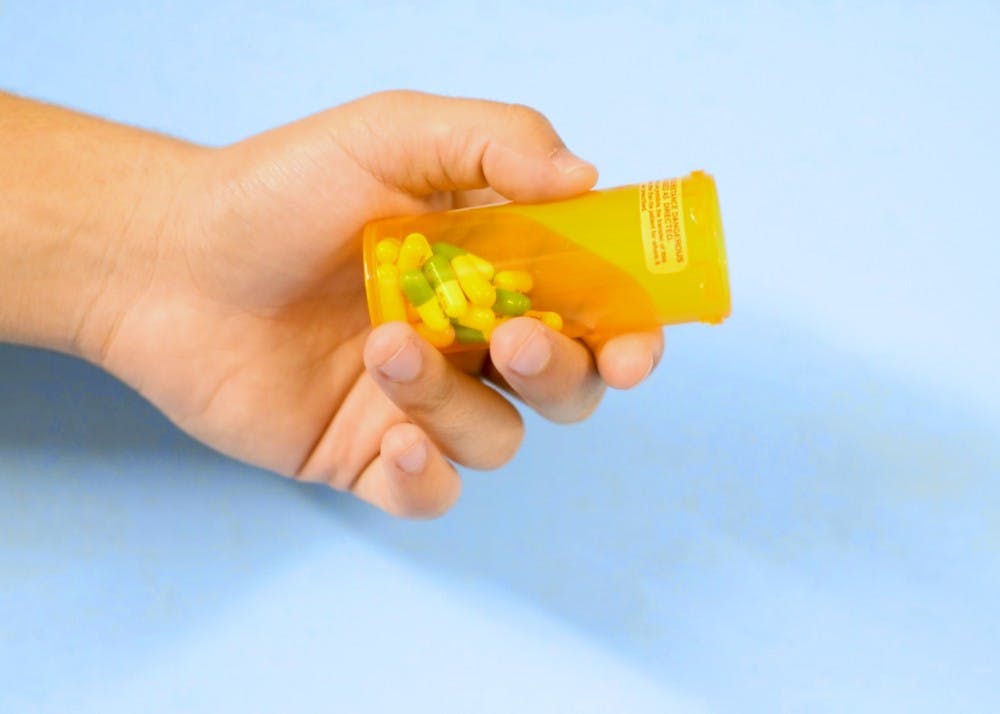Research recently found America’s college students have an inflated view of prescription stimulant abuse, thinking it occurs more frequently than it actually does.
In a study by University of Washington’s Jason Kilmer, students guessed about 30 percent of their classmates were taking drugs like Adderall and Ritalin for nomedical purposes at least once a year. Kilmer found only 17 percent of students surveyed had done so.
Kilmer surveyed a total of 2,989 undergraduates from seven American universities. The participating schools cannot be identified for confidentiality reasons.
The spring 2017 Indiana College Substance Use Survey reported 5 percent of 4,814 students surveyed from 31 Indiana colleges had misused prescription stimulants in the past month.
More than one fifth of students Kilmer surveyed guessed that more than half of their classmates were abusing prescription stimulants at least once a year. Some students guessed that number was as high as 98 percent.
“That’s noteworthy,” Kilmer said. “If we can correct that misperceived norm, we might actually see that that could have an impact on people’s decision to use or not use.”
He said colleges have gotten better about educating on things like how to minimize risk when consuming alcohol, but they still have a ways to go regarding prescription drug abuse.
Kilmer credits his interest in the topic of substance abuse to research he started working on as an undergraduate in 1989.
“The general kind of mindset at that time was abstinence only, just say no,” he said.
Kilmer credits his current work to IU’s own late Alan Marlatt because he got his start working with college students on a project with one of Marlatt’s graduate students.
In a time where abstention was recognized as the primary means to solve substance issues, Kilmer said Marlatt was asking tougher questions.
“Listen, we can’t tell people to just say no," Kilmer said, citing Marlatt's philosophy. "We obviously can’t tell them to just say yes, but what if they do say yes?”
Regarding his interest in this topic, Kilmer also pointed to researcher Amelia Arria from the University of Maryland. In a keynote presentation the two collaborated on together last year, Arria theorized that nonmedical use of prescription stimulants could be linked to marijuana use.
The basis of her theory is that those who use marijuana are more likely to have attention, concentration and memory decreases, Kilmer explained. Experiencing those issues may cause people to turn to stimulants to aid their focus.
Kilmer’s research found 86 percent of students who engaged in nonmedical use of prescription stimulants also used marijuana in the past year. Only 38.8 percent of students who did not abuse stimulants reported using marijuana in the past year.
His findings also showed skipping class and heavy drinking are correlated with abuse of prescription stimulants.
In her paper, “Dispelling the myth of ‘smart drugs,’” Arria concluded both alcohol and marijuana use lead to decreasing GPA and skipping class, which can lead to nonmedical prescription stimulant use.
“To me, it highlights the importance of considering the context of a student’s substance use,” Kilmer said.
He said it can be difficult to recognize signs of stimulant abuse since some of the behaviors you would look for are also signs of a busy college student.
According to the Mayo Clinic, these signs can include reduced appetite, agitation, insomnia and anxiety.
“Students should be reminded that there are few shortcuts to success,” Arria’s study concluded. “Prescription stimulants are not a ‘quick fix’ for poor academic performance.”




